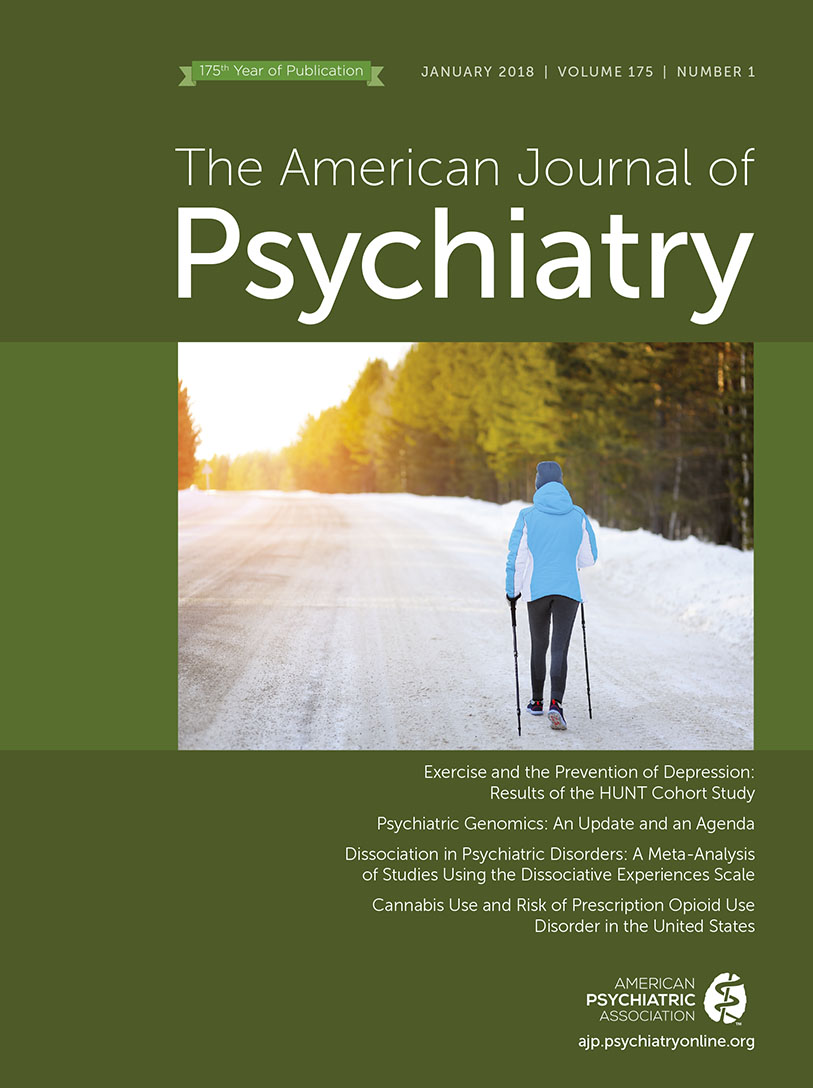Mixed Features in Bipolar I Disorder and the Effect of Lithium on Suicide
To the Editor: We read with much interest the article by Song et al. (1), published in the August 2017 issue of the Journal, showing that rates of suicide-related events in bipolar disorder were significantly decreased during lithium treatment, but not during valproate treatment, using a long follow-up period and the largest sample ever reported. Surprisingly, however, subgroup analyses showed a nonsignificantly reduced rate of suicide-related events during lithium treatment for patients with bipolar I disorder (hazard ratio=0.85, 95% CI=0.67–1.09) and a significantly reduced rate for patients with bipolar II disorder (hazard ratio=0.62, 95% CI=0.46–0.82). This finding suggests that lithium can prevent suicide in bipolar II disorder but not in bipolar I disorder, which is not in line with our clinical experience.
We wonder if Song et al. used DSM-IV-TR criteria to diagnose all patients with mixed episodes as suffering from bipolar I disorder. As shown by themselves, suicide-related events were not significantly reduced during lithium treatment for patients with mixed episodes (hazard ratio=0.87, 95% CI=0.74–1.03), suggesting that lithium may not be effective for suicide prevention in patients with mixed episodes. If the authors included such individuals in their cohort of patients with bipolar I disorder, the effect of lithium on suicide prevention in bipolar I disorder might have been attenuated to a nonsignificant level.
In fact, other researchers have reported that mixed states had the highest incidence rate of suicide attempts (765 per 1,000 person-years), whereas major depressive episode, depressive symptoms, euthymia, hypomania, and mania had incidence rates of 354, 70, 6, 0, and 0 per 1,000 person-years, respectively (2). In addition, a meta-analysis showed a nonsignificant pooled risk ratio (1.03, 95% CI=0.88–1.20) for comparison of bipolar I disorder relative to bipolar II disorder (3). Therefore, the suicide rate may depend on mixed state and depressive episode but not on bipolar subtype (bipolar I or II).
We recommend that Song et al. rediagnose their patients using a specifier of “with mixed features” (DSM-5), which can be added not only to bipolar I disorder but also to bipolar II disorder. It is likely that the hazard ratio of suicide-related events in patients with bipolar I disorder will be increased to a significant level, whereas that of patients with bipolar II disorder will be decreased but within a significant level. This new conclusion would suggest that lithium may be effective for suicide prevention in both bipolar I and II disorders.
1 : Suicidal behavior during lithium and valproate treatment: a within-individual 8-year prospective study of 50,000 patients with bipolar disorder. Am J Psychiatry 2017; 174:795–802Link, Google Scholar
2 : Incidence and predictors of suicide attempts in bipolar I and II disorders: a 5-year follow-up study. Bipolar Disord 2017; 19:13–22Crossref, Medline, Google Scholar
3 : Suicide attempts in bipolar disorders: comprehensive review of 101 reports. Acta Psychiatr Scand 2016; 133:174–186Crossref, Medline, Google Scholar



